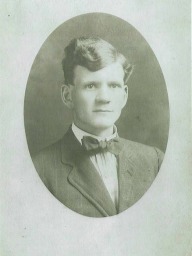Junuar Wake in the news

Some tidbits from a scanned newspaper from 1971 discussing population drift which features an interview with Junuar, Arthur Wake’s brother. The article surprisingly describes Arthur Wake as a contract painter in Madison for 30 years. Is this correct?
From The Courier-Journal from Louisville, Kentucky, page 5, Wednesday, June 16, 1971 (I’ve attempted to fix some computer-interpretation errors in the online version, but one or two parts were too confusing, so I left the typos):
INDIANA NEWS WEDNESDAY, JUNE 16, 1971 SECTION B, Population Drift, No Negroes left in Switzerland County; couple has moved to Jefferson
By GORDON ENGLEHART Courrier-Journal, Staff Writer VEVAY, Ind.
The 1970 federal census is wrong. Or, at least, outdated. The census listed one count of one Negro living in Switzerland County. There are no Negro residents now in Switzerland. June Wake and wife, Sarah, have left in January 1970. There’s no explanation why. The census apparently listed only one of them, but they both moved a few miles west, across the Jefferson County (Ind.) line, into Madison.
Neither had any difficulty with other students, according to Wake. Ponteeka went on to become the first Negro ever to train as a nurse at Bethesda Hospital in Cincinnati. She was graduated with high honors. “I don’t hold nothing agin nobody,” Wake said. The only discrimination he ever ran into, he said, was that Democratic county officials did nothing about the dead-end road his farm was on. But Wake said that was only because he is a Re- publican. “I do not believe in this hatredness on account of politics,” he added.
On his farm, Wake himself built a nine-room home and other buildings. In Madison, he built the 10-room, one-floor house he and his wife live in on Elm Street, a few blocks northwest of the main drag. Wake sold his farm for $13,000. He had bought the land for $2,200, and over a 50-year period had spent an additional $19,000 on the buildings not counting his own labor.
Wake used to fish a lot, but no more. Mostly he works. Right now he is helping erect a new hotel in nearby Clifty Falls State Park. He and his wife are members of Second Baptist Church, and he is a deacon there. He is also a member of the Veterans of Foreign Wars, World War I Veterans, and American Legion. Just about every Saturday night he drops in at the Legion post.
Wake’s brother, Arthur, was a contract painter in Madison for 30 years before his recent death. Wake likes the city. “It has a lot of business for a little town,” he said. , “I know a good many people. I know I the police chief, the sheriff, the mayor, the bankers, all the merchants it’s not like being in a strange place.”
The Indiana Business Review in its March/April issue said the 1970 federal census showed 357,464 Negroes and 15,881 other “non-white” population in Indiana 7.2 per cent of the total 5,193,669. Carroll County was the only county besides Switzerland listed as having only one Negro resident. Three counties Blackford, Crawford and Warren have none
History of Little Doe Run School to be t graduated from its eighth grade. In those days, he recalled, most boys had to go to work early and had no opportunity to complete their schooling. After graduation, Wake moseyed over to Madison, worked 10 hours a day, six days a week, as a boiler fireman in a saw mill, for $1.75 a day, got married on Oct. 31, 1917, then spent a year in the Army in France. After his discharge, he signed on as a carpenter in a Madison planing mill.
His mother became ill. Wake returned to Switzerland, renting 100 acres (which he later bought) alongside the family farm. From 1936 on, a Kentuckian, Joe Todd, did most of the farming. Wake carpentered and painted. He reared a family. Stepson Charles Fields is now a plumber in Detroit. An adopted daughter, Mrs. Ponteeka (an Indian name) Whitley, is a nurse at Larue Carter Hospital in Indianapolis.
Over those years, there were several other Negro families in Switzerland County. But all died out or moved away. Charles and Ponteeka were the only Negro students in Vevay High School. “They’d fight for me. I had a wonderful time there I loved it.” Vevay attorney Chester Callis and folks around the courthouse in this small river county all spoke highly of Wake.
Wake said he moved because his wife’s health troubles could best be tended in a city with doctors and a hospital nearby. And, he said, “the farm was not making me anything.” “It had a lot of alfalfa on the hills,” Wake explained. “When the alfalfa runs out, and you break it up (plow to re-sow), the land washes away, and you quit sowing on the hills, and you are left with not enough hay to feed your cattle.”
Wake, short and thin, is 76. He looks and acts more like 56. His wife is dark, but Wake is indistinguishable in coloration and features from any white man. Wake was born in Owen County, Kentucky. When he was 8, his father, George, moved the family to an 80-acre farm on Little Doe Run, three miles east of Brooksburg. Wake is proud of the fact that he was the first boy in the half-century h SC June Wake ison. It had nothing to do with their color. Except for a few years, Wake had lived in Switzerland, on a farm near Brooks-burg, since 1904. “None whatever,” he said yesterday, when asked if he had ever encountered any racial problems. “Oh, to begin with, there were some differences. But I grew up with those boys and girls.”